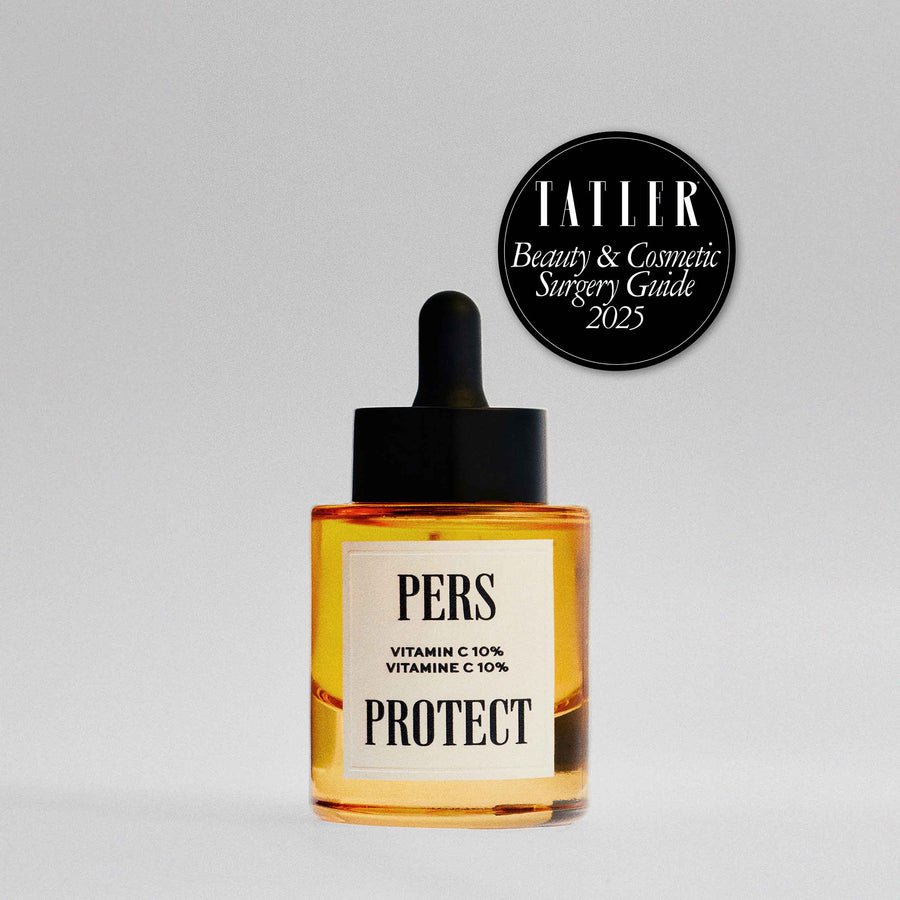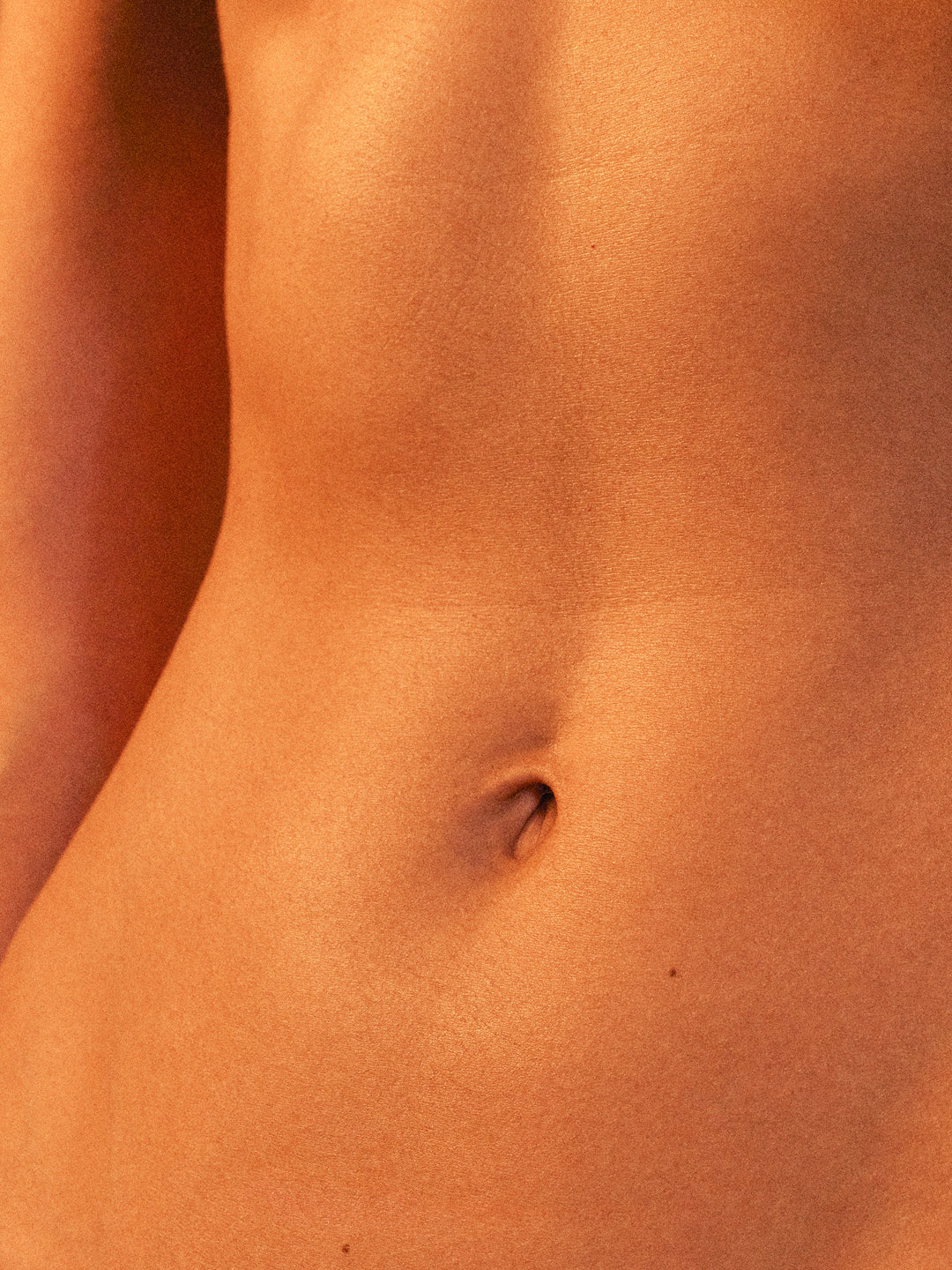Skin elasticity

At PERS, we're convinced that beautiful skin is, above all, skin you know. Today, we're sharing our secrets for keeping skin fresh, supple and plump, for longer.
Skin elasticity and viscoelasticity: what's the difference?
Elasticity refers to the skin's ability to change shape and return to its original position when stretched or deformed.
The test? Pinch the back of your hand for five seconds, and after releasing it, calculate the number of seconds it takes to snap back into place. For reference, subjects under the age of 30 see their skin snap back into place in 1 to 2 seconds, while it takes 35 to 55 seconds for subjects aged 70.
As for viscoelasticity, this refers to the skin's ability to quickly return to normal after being compressed.
While skin elasticity depends above all on elastin, viscoelasticity depends above all on the skin's water content.
How is skin structured?
The skin is an envelope covering our entire body. It accounts for a third of the human body's weight, covering a surface area of around 2 m2 for an adult.
This complex organ is made up of 2 main layers, from surface to depth: the epidermis and the dermis.
1. The epidermis

The epidermis is the superficial layer that protects the body from external aggression. It is essentially made up of keratinocytes and melanocytes, responsible for skin color and spots, and takes an average of 28 days to renew itself.
2. Dermis

The dermis is the supporting tissue of the epidermis.
Unlike the epidermis, this complex connective tissue is richly vascularized. It is thicker than the epidermis.
Fibrous proteins, the fibroblasts of the epidermis synthesize the constituents of the extracellular matrix of the dermis, giving it its structural and mechanical properties, in other words, its elasticity and viscoelasticity.
The skin's extracellular matrix is made up of 60-70% water, 30% collagen, 0.2% elastin and 0.03% glycosaminoglycans (including hyaluronic acid). Despite its very low quantity, hyaluronic acid is able to bind up to 1,000 times its weight in water, making it an essential component for beautiful, healthy skin.
All this extracellular matrix forms a dense, gelatinous mass that envelops fibers and cells in the dermis, ensuring skin's viscoelasticity and firmness.
The skin's elasticity and resistance to stretching depend on its fibrous components: elastin and collagen.
Collagen and elastin: the iconic duo
Elastin stretches like a rubber band. However, beyond a certain limit, it can easily break: cross-links with collagen fibers, which resist excessive stretching, prevent elastin from breaking.
Thanks to these cross-links between collagen and elastin, elastic fibers can stretch and relax without breaking, returning to their original state once the force has been released.
The aging process
From the age of 35-40, collagen synthesis declines, while degradation increases. Wrinkles appear, and skin loses tone and elasticity. At the same time, elastic fibers undergo a process of "structural disorganization", rendering them less functional. As a result, skin appears less firm and toned.
How to maintain skin elasticity?
Key active ingredients
RETINOIDS
One of the three forms of vitamin A, retinol, and its derivatives retinoids, are considered the benchmark in anti-aging actives, thanks to their ability to increase collagen synthesis and reduce its degradation.
Retinol stimulates fibroblasts involved in the synthesis of collagen and elastin fibers, restoring firmness and support to the skin. It also plays a role in the production of hyaluronic acid, which binds cells together. It is therefore a powerful active ingredient for firming, smoothing fine lines and wrinkles and preventing skin slackening.
VITAMIN C
Vitamin C is a powerful antioxidant, eliminating most of the oxygen free radicals responsible for skin aging. This active ingredient is therefore widely used as an anti-aging agent, particularly in the protection and prevention of aging.
In the skin, it also acts as a cofactor in the synthesis of procollagen and elastin. Studies suggest that vitamin C stimulates collagen synthesis in skin fibroblasts and increases dermal thickness.
How can food help?
Certain foods can have beneficial effects on the skin and its health, such as cocoa and its flavanols, which are reputed to improve elasticity and reduce wrinkles in photo-aged skin.
Finally, the hormonal balance induced by menopause plays a major role in the loss of skin elasticity. Hormone replacement therapy can therefore have an impact on skin elasticity. A gentler, more natural approach is to take phytoestrogens, natural substances that slightly mimic the action of hormones. Genistein, a soy extract, stimulates the production of new collagen and elastin by inhibiting their degradation. Applied topically and orally, it improves skin elasticity.
Alternatives in aesthetic medicine
There are several medical-aesthetic treatments (chemical peels, microneedling, biostimulation with vitamin injections, etc.) to stimulate collagen and elastin synthesis and thus improve skin elasticity.



